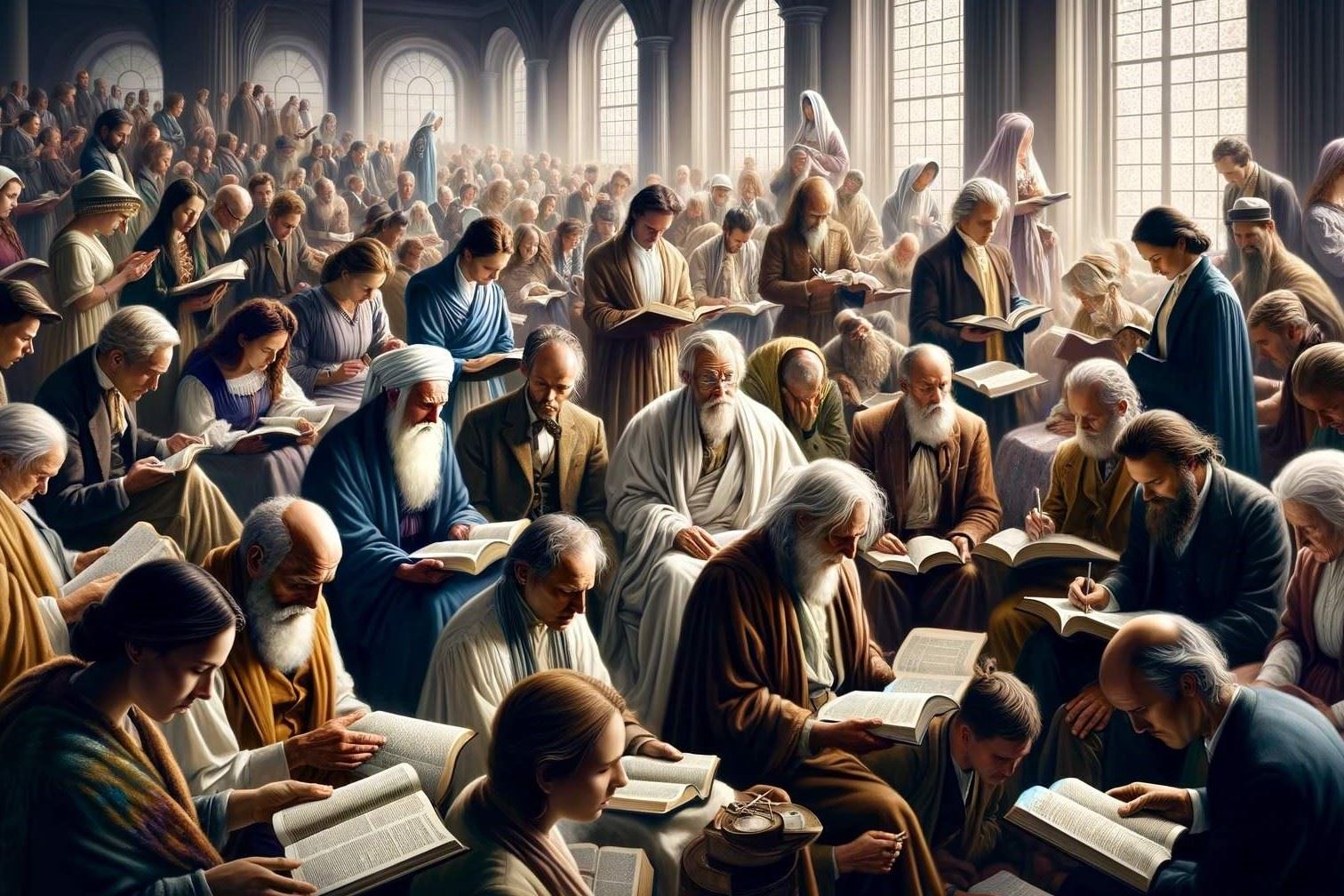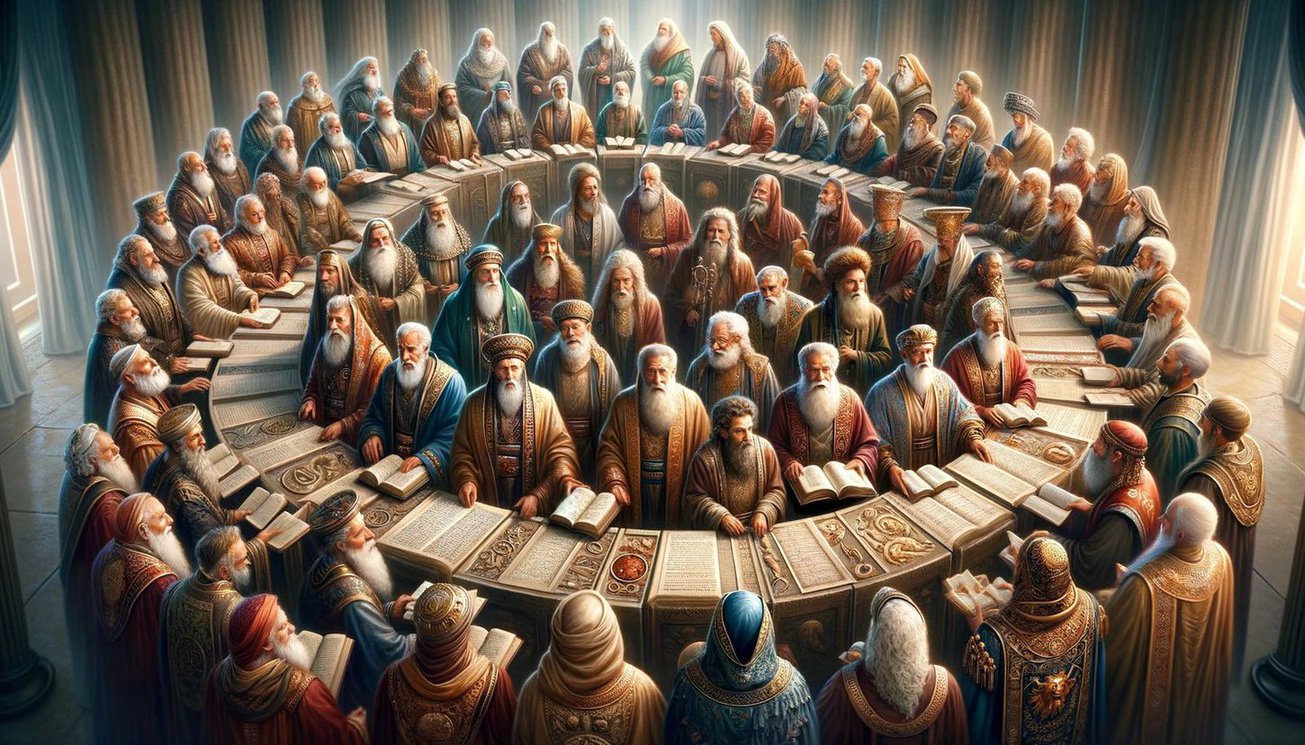Home>Bible Facts>Who Is The False Prophet In The Book Of Revelation


Bible Facts
Who Is The False Prophet In The Book Of Revelation
Published: February 11, 2024
Peter Smith, Editorial Director at Christian.net, combines deep insights into faith, politics, and culture to lead content creation that resonates widely. Awarded for his contributions to religious discourse, he previously headed a major organization for religious communicators, enhancing dialogue on faith's societal impacts.
Discover the truth about the false prophet in the Book of Revelation and gain valuable insights into biblical facts. Uncover the significance of this figure in the context of biblical prophecy.
(Many of the links in this article redirect to a specific reviewed product. Your purchase of these products through affiliate links helps to generate commission for Christian.net, at no extra cost. Learn more)
Table of Contents
Introduction
The Book of Revelation, the final book of the New Testament, is a captivating and enigmatic text that has intrigued scholars, theologians, and believers for centuries. Its vivid imagery, prophetic messages, and apocalyptic themes have sparked countless debates and interpretations. One of the intriguing figures introduced in this book is the False Prophet, a mysterious character whose identity and role have been the subject of much speculation and analysis.
In this article, we will delve into the fascinating world of the Book of Revelation and explore the concept of the False Prophet. By examining historical and modern interpretations, we aim to shed light on the significance of this enigmatic figure within the context of biblical prophecy and eschatology. Join us on this enlightening journey as we unravel the mysteries surrounding the False Prophet and gain a deeper understanding of the profound symbolism and messages contained within the Book of Revelation.
Understanding the Book of Revelation
The Book of Revelation, also known as the Apocalypse of John, is a complex and visionary work that holds a unique place within the biblical canon. Written by the apostle John, it is a prophetic text that offers a glimpse into the divine mysteries of the future, presenting a series of vivid and symbolic visions that convey profound spiritual truths. The book is structured as a letter addressed to the seven churches in Asia Minor, but its message transcends its immediate audience, speaking to believers across time and space.
Revelation is characterized by its rich symbolism, dramatic imagery, and apocalyptic themes, which have inspired a wide range of interpretations throughout history. The text unfolds a series of visions that depict cosmic battles, divine judgments, and the ultimate triumph of good over evil. Central to its message is the revelation of Jesus Christ as the victorious and exalted Lord, whose sovereignty extends over all creation.
The book is divided into three main sections: the letters to the seven churches (chapters 2-3), the visions of the heavenly realms and the unfolding of divine judgments (chapters 4-19), and the portrayal of the new heaven, new earth, and the coming of the New Jerusalem (chapters 21-22). Each section contributes to the overarching narrative of God's redemptive plan for humanity and the cosmos.
Revelation employs a variety of literary forms, including apocalyptic, prophetic, and epistolary elements, creating a tapestry of profound theological insights and eschatological significance. Its symbolic language and cryptic imagery invite readers to engage in deep reflection and contemplation, prompting them to seek spiritual discernment and wisdom.
The book's overarching message is one of hope, perseverance, and faith in the face of adversity. It reassures believers that God is ultimately in control, and that His purposes will be fulfilled despite the trials and tribulations of the present age. Revelation serves as a powerful reminder of the ultimate victory of Christ and the fulfillment of God's redemptive plan, offering comfort and encouragement to those who eagerly await the consummation of all things.
In the next section, we will explore the intriguing figure of the False Prophet and its significance within the context of Revelation's prophetic narrative.
Identifying the False Prophet
Within the intricate tapestry of the Book of Revelation, the figure of the False Prophet emerges as a compelling and enigmatic character. Described in Revelation 13:11-18, the False Prophet is depicted as exercising great authority and performing miraculous signs, ultimately leading people astray and promoting the worship of the Antichrist. The identity and significance of the False Prophet have been the subject of intense scrutiny and diverse interpretations throughout history.
In the context of biblical prophecy, the False Prophet is often viewed as a symbol of deceptive spiritual influence and counterfeit spirituality. The character embodies the perversion of truth and the distortion of divine revelation, luring individuals into embracing falsehood and idolatry. The False Prophet's association with the Antichrist underscores the notion of a counterfeit trinity, mirroring the unholy alliance of the dragon, the beast, and the false prophet as opposed to the divine Trinity of Father, Son, and Holy Spirit.
The False Prophet's ability to perform miraculous signs and wonders adds another layer of complexity to the character's portrayal. These supernatural manifestations serve as a means of deceiving the masses and reinforcing the authority of the Antichrist, perpetuating a climate of spiritual delusion and moral compromise. The False Prophet's deceptive charisma and persuasive rhetoric contribute to the seduction of humanity, leading many astray in their allegiance to the forces of darkness.
Interpreting the identity of the False Prophet has been a matter of conjecture and speculation, with historical and modern scholars offering diverse perspectives. Some interpretations have sought to identify the False Prophet with specific historical figures or religious movements, while others have approached the character as a symbolic representation of pervasive spiritual deception and false ideologies.
Amidst the diversity of interpretations, the overarching message conveyed through the portrayal of the False Prophet remains consistent: a warning against succumbing to spiritual deception and embracing counterfeit forms of truth and worship. The character serves as a cautionary emblem, urging believers to exercise discernment and steadfast faith in the face of seductive falsehoods and deceptive influences.
As we continue to explore the multifaceted layers of the Book of Revelation, the enigmatic presence of the False Prophet invites us to contemplate the enduring relevance of its symbolic significance and the timeless relevance of its cautionary message.
Historical Interpretations
Throughout the centuries, the figure of the False Prophet in the Book of Revelation has been the subject of diverse and thought-provoking historical interpretations. Early Christian theologians and exegetes, such as Origen and Augustine, grappled with the symbolic significance of the False Prophet within the context of their eschatological frameworks. Their interpretations often emphasized the spiritual and moral dimensions of the character, portraying the False Prophet as a representation of false teachings, heresies, and deceptive ideologies that threatened the integrity of the Christian faith.
During the medieval period, as apocalyptic fervor intensified, the identification of the False Prophet became intertwined with contemporary political and religious figures, particularly those perceived as adversaries of the Christian church. Various historical figures, including popes, political leaders, and religious reformers, were at times associated with the ominous portrayal of the False Prophet, reflecting the prevailing anxieties and tensions of the era.
The Protestant Reformation brought forth new perspectives on the identity of the False Prophet, as reformers and theologians sought to apply the apocalyptic imagery of Revelation to the socio-political landscape of their time. The papacy and the Roman Catholic Church were often scrutinized through the lens of the False Prophet, with reformers interpreting the character as a representation of ecclesiastical corruption, doctrinal error, and religious tyranny.
In more recent history, the rise of global conflicts, ideological movements, and charismatic leaders has prompted reinterpretations of the False Prophet within the context of contemporary events. Some historical interpretations have sought to align the figure of the False Prophet with specific individuals or movements that embody characteristics reminiscent of the apocalyptic portrayal in Revelation, reflecting the perennial fascination with identifying prophetic symbols in light of current societal and geopolitical developments.
The historical interpretations of the False Prophet underscore the enduring relevance of Revelation's imagery and themes, demonstrating the dynamic interplay between biblical symbolism and the ever-changing tapestry of human history. As we navigate the intricate web of historical perspectives, we gain valuable insights into the enduring impact of the Book of Revelation and its capacity to provoke contemplation, debate, and introspection across diverse cultural and historical contexts.
Modern Interpretations
In contemporary scholarship and theological discourse, the figure of the False Prophet in the Book of Revelation continues to evoke a spectrum of modern interpretations that reflect the evolving complexities of global society, religious thought, and cultural dynamics. Modern theologians, biblical scholars, and eschatological thinkers have engaged with the enigmatic portrayal of the False Prophet, offering diverse perspectives that resonate with the contemporary milieu.
One prevalent modern interpretation revolves around the intersection of technology, mass media, and the dissemination of ideologies. Some scholars have drawn parallels between the deceptive influence of the False Prophet and the pervasive impact of modern communication platforms, highlighting the potential for misinformation, manipulation, and ideological seduction on a global scale. The rapid dissemination of false narratives and the manipulation of truth through digital mediums have prompted reflections on the relevance of the False Prophet's deceptive prowess in the context of contemporary information warfare and ideological propaganda.
Moreover, the rise of charismatic leaders and influential personalities on the world stage has prompted modern interpretations that seek to discern echoes of the False Prophet's persuasive charisma and seductive rhetoric in the realm of politics, religion, and popular culture. The allure of charismatic figures who wield influence over masses and shape public discourse has sparked discussions on the enduring relevance of the False Prophet's ability to captivate and mislead humanity, transcending historical epochs and cultural boundaries.
In the realm of religious thought and interfaith dialogue, modern interpretations have explored the implications of the False Prophet's portrayal within the context of religious pluralism, spiritual syncretism, and the encounter of diverse belief systems. The figure of the False Prophet has been examined as a symbol of religious extremism, ideological fanaticism, and the distortion of spiritual truth, prompting critical reflections on the challenges of navigating religious diversity and fostering mutual understanding in an increasingly interconnected world.
Furthermore, some modern interpretations have sought to discern the shadow of the False Prophet in the realm of consumerism, materialism, and the commodification of spirituality. The seductive allure of consumer culture and the propagation of false promises have been juxtaposed with the deceptive allure of the False Prophet, inviting contemplation on the pervasive influence of materialistic ideologies and their impact on individual and collective values.
As we navigate the diverse landscape of modern interpretations, we encounter a tapestry of thought-provoking perspectives that invite us to grapple with the enduring relevance of the False Prophet's symbolic significance in an ever-changing world. These interpretations prompt us to engage in critical reflection, ethical discernment, and spiritual vigilance as we navigate the complexities of contemporary existence.
Read more: Who Was The Book Of Revelation Written For?
Conclusion
The enigmatic figure of the False Prophet in the Book of Revelation continues to captivate the imagination of scholars, theologians, and believers, inviting profound reflections on the enduring relevance of its symbolic significance. Throughout history, diverse interpretations have sought to unravel the complexities of this character, shedding light on the timeless themes of spiritual deception, moral compromise, and the enduring struggle between truth and falsehood.
As we journey through the intricate tapestry of Revelation's apocalyptic visions, the portrayal of the False Prophet serves as a poignant reminder of the perennial challenges faced by humanity in discerning truth from deception. The character's ability to perform miraculous signs and lead people astray underscores the enduring allure of counterfeit spirituality and the seductive power of deceptive ideologies, transcending historical epochs and cultural contexts.
Moreover, the historical and modern interpretations of the False Prophet reflect the dynamic interplay between biblical symbolism and the ever-changing landscape of human history. From early Christian theologians to contemporary scholars, the diverse perspectives on the identity and significance of the False Prophet mirror the evolving complexities of global society, religious thought, and cultural dynamics, resonating with the perennial quest for spiritual discernment and ethical vigilance.
In the midst of these diverse interpretations, the cautionary message embedded within the portrayal of the False Prophet remains steadfast: a call to steadfast faith, moral integrity, and unwavering commitment to the pursuit of truth. The character serves as a sobering emblem, urging believers to remain vigilant against the allure of deceptive influences and to uphold the values of authenticity, integrity, and spiritual discernment in the face of prevailing falsehoods.
Ultimately, the enigmatic presence of the False Prophet in the Book of Revelation invites us to contemplate the enduring relevance of its cautionary message, prompting us to navigate the complexities of contemporary existence with wisdom, discernment, and unwavering faith. As we heed the timeless warnings embedded within its prophetic imagery, we are reminded of the enduring hope and ultimate triumph of truth over deception, light over darkness, and the fulfillment of God's redemptive plan for humanity and the cosmos.














